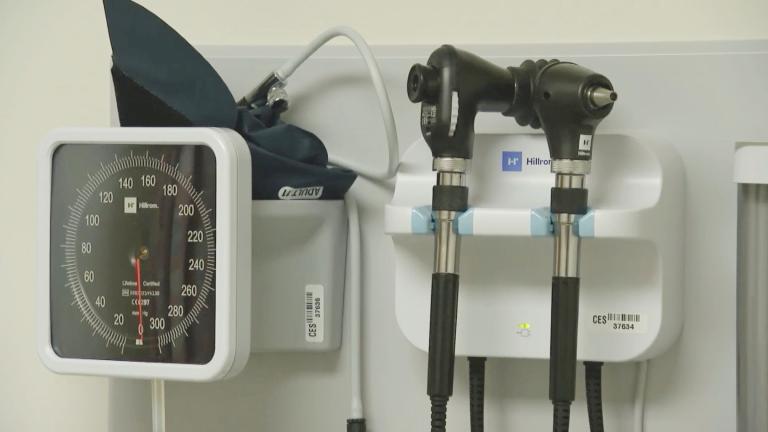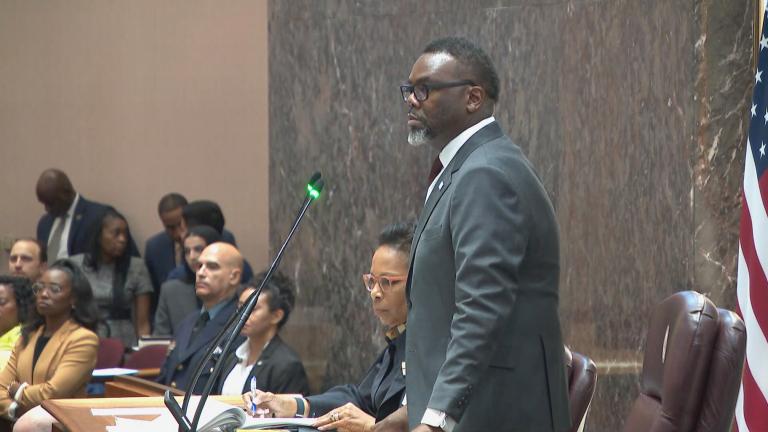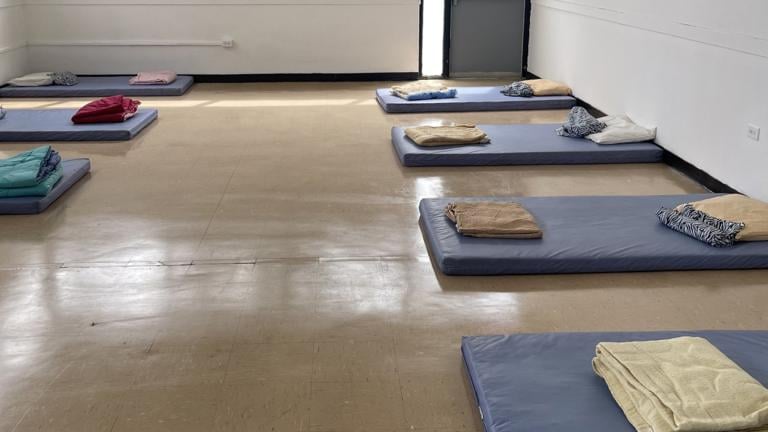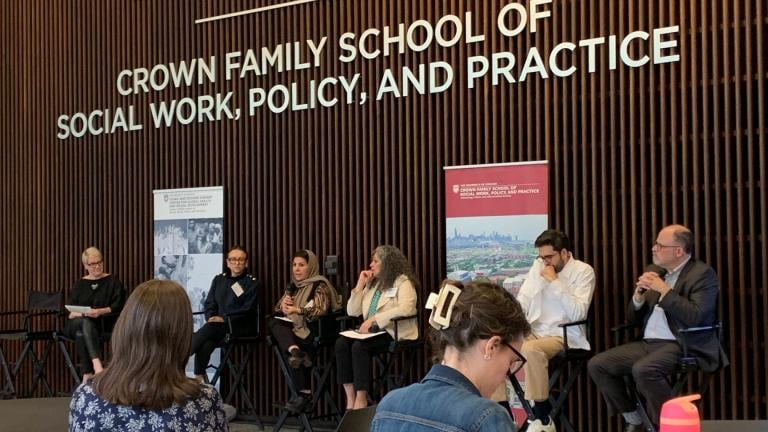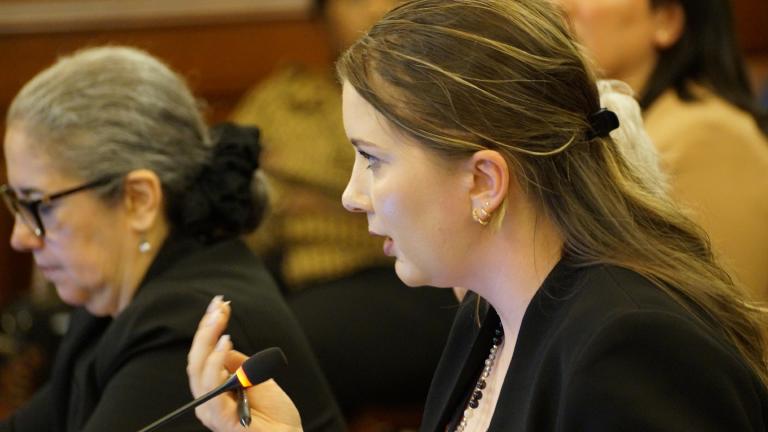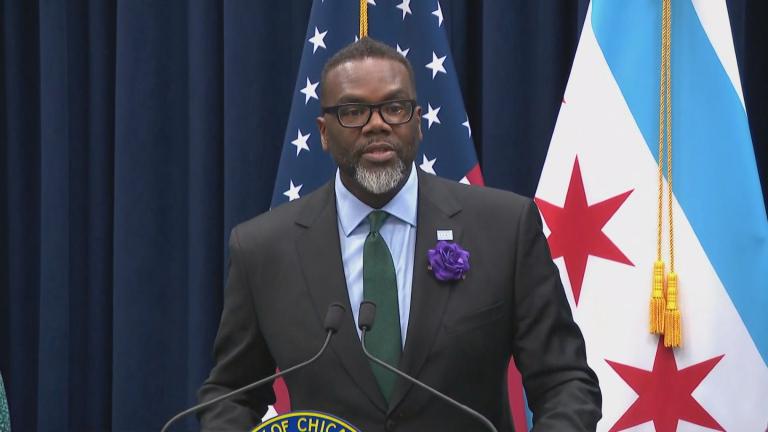City officials paid at least $138 million in 2023 to house, feed and care for the men, women and children sent to Chicago from the southern border, according to data published by Mayor Brandon Johnson’s administration.
That tally, which includes all invoices paid through Dec. 15, defies predictions released by city officials in mid-October that the cost of the migrant crisis to taxpayers would top $361 million by the end of 2023.
Lakesha Gage-Woodard, a spokesperson for the city's Budget Office, said Thursday city officials were comitted to being transparent about the cost of caring for the migrants. Gage-Woodard said some of the disparity between the final figures detailed in a city database designed to help members of the public keep tabs on the cost of the escalating crisis and projections released by his office was due to a lag in processing invoices. The database is set to be updated again Jan. 10.
The database also contradicts what Johnson told reporters while in Washington, D.C., on Nov. 2.
“The $40 million that it’s costing the city of Chicago a month to provide care for these individuals who are seeking asylum – that is not sustainable,” Johnson said.
Projections released by the mayor’s office in mid-October included $158 million to fund Johnson’s plan to build massive base camps to house the migrants and shield them from the cold weather. Those plans were never implemented.
For months, city officials struggled to identify locations for the tents, which proved to be intensely controversial, only to see state officials block work on a base camp at 38th Street and California Avenue amid concerns about toxic soil.
Accounting for the failure to open the base camps, the city spent approximately $65 million less by the end of 2023 than officials expected in mid-October, even as the city opened more than a dozen new shelters in 2023. Gage-Woodard said she could not detail what contributed to that disparity until the database was updated.
In mid-November, Gov. J.B. Pritzker announced the state would spend an additional $160 million as part of an urgent effort to care for the migrants. That work began in earnest this week, with crews starting up efforts to transform a vacant CVS drugstore in Little Village into a shelter for 220 people.
In addition, crews began erecting an intake center, complete with heated tents, to help migrants after they arrive in Chicago on buses. The city’s designated “landing zone” is at Polk and Desplaines streets downtown.
By mid-November, the state spent $478 million to care for the migrants, state officials said. The bulk of those funds are not tracked by city officials, or included in the city’s database.
Of the $138 million spent by city officials to care for the migrants in 2023, more than $59 million came directly from Chicago taxpayers, according to city data.
The rest came from the state and federal governments via grants that totaled $78.8 million, according to city data.
The city paid three private firms $127 million to care for the migrants, essentially outsourcing the day-to-day responsibility for managing the humanitarian crisis that defined Mayor Brandon Johnson’s first six months in office.
The city paid Favorite Staffing approximately $93.7 million in 2023, under a contract inked by former Mayor Lori Lightfoot before she left office. Under a renegotiated deal signed by Johnson, the city will pay the firm $40 million through October to staff the city’s shelters.
The city paid Equitable Social Solutions $19 million to help find housing for the migrants. An additional $15 million went to Open Kitchens to feed the migrants, who are all in the country legally after requesting asylum but are not permitted to work without special permission.
Federal officials granted just 315 migrants permission to work in Chicago, according to city data. In September, Biden allowed thousands of Venezuelan migrants to work in industries facing labor shortages.
That slow pace will complicate efforts by migrants to be able to afford to leave city shelters, and increase the financial burden on city officials.
The database does not detail the direct costs of caring for the migrants by the city officials charged with responding to the crisis as part of their normal job duties, and the mayor’s office has offered no estimate of those costs.
In addition, the database does not include the nearly $1 million the city paid to prepare the site at 38th and California once expected to be home to a base camp, nor does it identify the cost of an initial environmental study of land at 115th and Halsted streets also identified as a potential site for a base camp.
Nor does it include the $1.5 million the Chicago City Council agreed to spend to buy the 10.7-acre property and building complex at 3034 W. Foster Ave. once used by the U.S. Marine Corps for use as a shelter. Once the crisis ends, Ald. Samantha Nugent (39th Ward) wants to use the riverside land as a park and recreation area.
No End in Sight to Migrant Crisis
Despite the arrival of cold weather, the crisis has yet to abate, and will likely escalate in the coming months as Chicago prepares to host the Democratic National Convention amid a surge of migrants crossing the southern border after fleeing economic collapse and political turmoil in Central and South America.
Since August 2022, 636 buses have arrived in Chicago, carrying nearly 29,500 people, on buses sent by Texas Gov. Greg Abbott to damage President Joe Biden’s chances for reelection and divide Democratic voters.
There are more than 14,700 migrants in 27 city shelters, with approximately 400 people waiting at police stations, O’Hare International Airport and on warming buses at the city’s designated bus “landing zone,” according to city data. The crisis has exposed deep divisions between Chicago’s Black and Latino communities and shredded the city’s social safety net.
Appearing on CBS’ “Face the Nation” on Sunday, Johnson renewed pleas for additional federal help.
“This is unsustainable,” Johnson said. “None of our local economies are positioned to carry on such a mission.”
The city’s 2024 budget sets aside $150 million to care for the migrants. Johnson briefed members of the City Council on Friday on plans to use $95 million in federal COVID-19 relief funds to care for the migrants, rather than discretionary city funds from Chicago taxpayers.
Johnson has acknowledged that is unlikely to be enough to care for the migrants, and said it should increase pressure on state and federal officials to do more to help Chicago.
In all, Chicago had $461.5 million left unspent from the nearly $2 billion in federal relief funds the city got in 2021 to strengthen Chicago’s social safety net and provide direct aid to Chicagoans struggling to recover from the pandemic as of mid-October, officials said.
Contact Heather Cherone: @HeatherCherone | (773) 569-1863 | [email protected]

